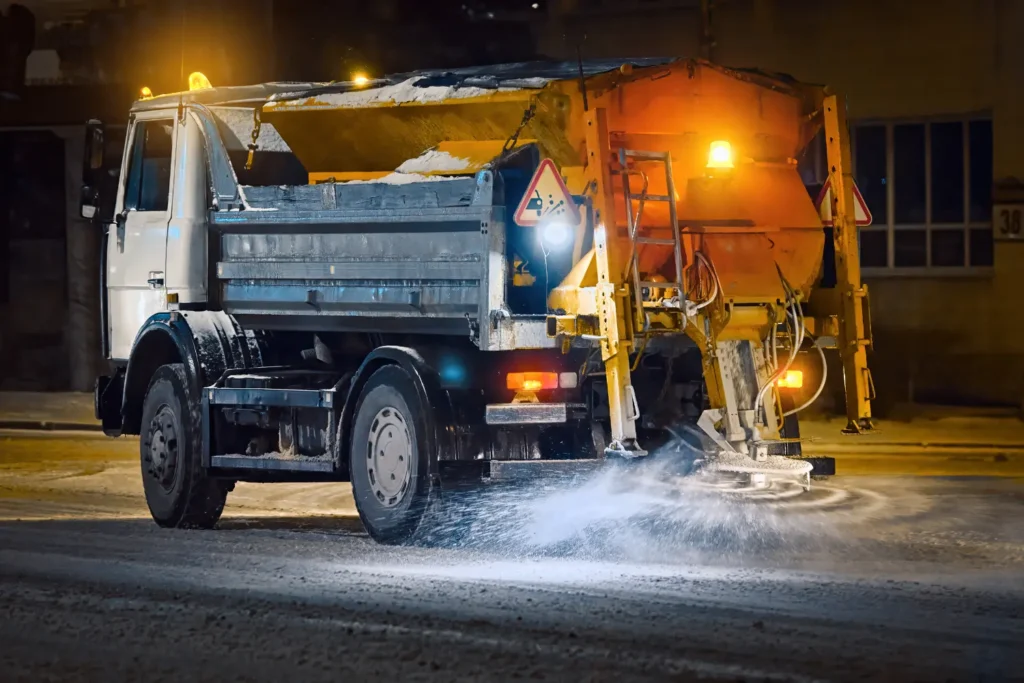Every year, the newspapers, radio stations, and TV channels are flooded with warnings: the NHS will be overwhelmed this winter.
While fewer people are admitted to hospitals in winter months, those who end up needing emergency care much more often—doubling from 15% in summer to 30% in winter. As healthcare facilities, both public and private, face increasing pressures, the last thing anyone wants is a shutdown due to winter weather.
This is why preparing healthcare facilities appropriately for winter weather is essential for preventing additional strain. Patients and staff alike need to be able to access facilities 24 hours a day, 7 days a week, no matter the storms raging outside.
There can be a lot to manage, from keeping vulnerable systems functioning in the face of cold weather to keeping the site clear of snow and ice.
With the right action plan and winter maintenance service providers, you can ensure your healthcare facility remains open, safe, and functional throughout winter, without any shutdowns or issues.
Conducting a Winter Risk Assessment
Before you contact winter maintenance services or start drafting a winter maintenance plan, your first step should be to evaluate your facility for potential hazards and winter vulnerabilities with a thorough winter risk assessment.
Make sure to assess:
- Any vulnerabilities or issues with heating systems – these are especially important for hospitals, as lower temperatures directly correlate to higher death rates
- Emergency exits that could become dangerous due to ice, or be blocked by snow.
- Potential for power outages on how equipment will be affected. While most healthcare facilities have emergency backup power, a sudden outage could still damage some equipment.
- Outside walkways and entrances that could quickly accumulate ice or snow, making them dangerous or impassable.
For healthcare facilities especially, focus on ambulance bays, emergency department entrances and exits, and other pathways to essential services, as an accident or blockage will most severely impact these.
Winter Maintenance Planning
Once you’ve assessed your facility for risk, you’ll need to establish a clear and actionable plan for dealing with winter weather, preferably well ahead of time. It’s never too early for winter maintenance planning.
Prepare plans to deal with both snow and ice, including establishing clear priorities for snow removal by focusing on the most important areas and emergency access points.
It’s also important to include plans on how to quickly pre-treat walkways, on-site roads, and parking areas ahead of snow and ice and create a 24/7 monitoring system to combat sudden weather changes.
Alongside preparing outside your facility, you’ll also need a plan to maintain your HVAC systems. You can do this by:
- Check the integrity of all insulation and weather-proofing materials around your facility.
- Implement a regular maintenance schedule throughout the winter months.
- Inspect your backup heating systems to ensure they work properly before winter hits.
- Conduct complete and thorough inspections across all your HVAC systems in good time to allow for preventative maintenance before winter.
Ensuring Accessibility and Safety
Even more so than any other buildings, ensuring your entire site remains safe and accessible at all times is essential for healthcare facilities.
To keep everything open, accessible, and safe at all times, make sure to:
- Ensure covered drop-off areas are accessible for patients with limited mobility to keep them protected from adverse weather.
- Establish clear and visible signage across your site to direct patients and visitors to safe entrances and warn of potential hazards.
- Install heated mats or other radiating heating systems at all key entrances to prevent ice and snow from forming and accumulating.
To make things even safer, you can also increase lighting in outdoor spaces to improve winter visibility and establish a system for regular safety checks of all exterior areas using security cameras and in-person sweeps.
Utilising Technology and Innovation
Over the last decade, new technologies and fresh innovations have helped facility managers and service providers more effectively manage winter weather.
At the forefront of this revolution are real-time weather monitoring systems, which allow for even more accurate weather forecasts than traditional methods. These systems deliver more detailed information, such as precise ground temperatures and precipitation levels.
Alongside this, systems of smart sensors can also be deployed across healthcare facilities to detect ice formation more rapidly and accurately and then automatically trigger de-icing systems such as heated mats or de-icing materials.
While still in development, other technologies, such as GPS-enabled snow removal equipment, are also in the works.
No matter what tools are required, AccuGrit remains at the forefront of advancing technologies, always striving to provide the best possible winter maintenance service for healthcare facilities.
Staff Training and Communication
Another vital step in good winter maintenance is training and communicating with all your staff, no matter their role.
Consider conducting winter safety workshops for all employees, and ensure key personnel are specifically trained on all emergency response procedures during adverse weather.
Throughout your facility, make sure clear communication channels are established, allowing you to quickly push through urgent weather-related updates and notify staff of possible operational changes due to winter conditions.
Always maintain good communication with patients and visitors, informing them of any updates to facility operations due to weather, and using clear signage and messaging for safe navigation of your healthcare facility.
Sustainability and Environmental Considerations
Whatever facility you run, using sustainable and environmentally friendly winter maintenance services is extremely important — not only because of nature but also because grit has a corrosive element that can damage infrastructure if misused.
As a top-quality winter services provider, AccuGrit is deeply committed to maintaining sustainable practices.
This is why we use eco-friendly de-icing products instead of grit, as well as using more efficient, data-driven gritting and snow-clearing methods to reduce our presence on your facility.
Conclusions
Preparing in good time, establishing and sharing a plan, and assessing your facility for possible risks and vulnerabilities is the first and most critical step in preparing for the winter.
When it comes to gritting surfaces and clearing snow and ice, you may well need a professional company to support you, especially if you’re a larger healthcare facility. If you’re looking for an expert winter maintenance provider for your healthcare facility, contact us today to see how AccuGrit can help keep you safe and operational at all times.


